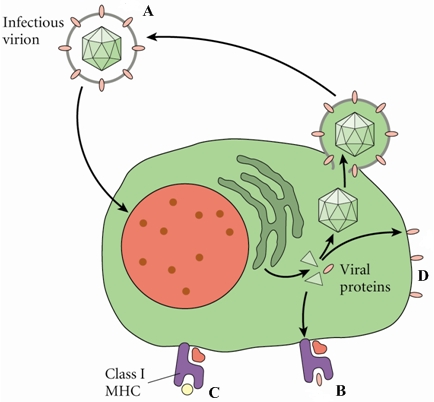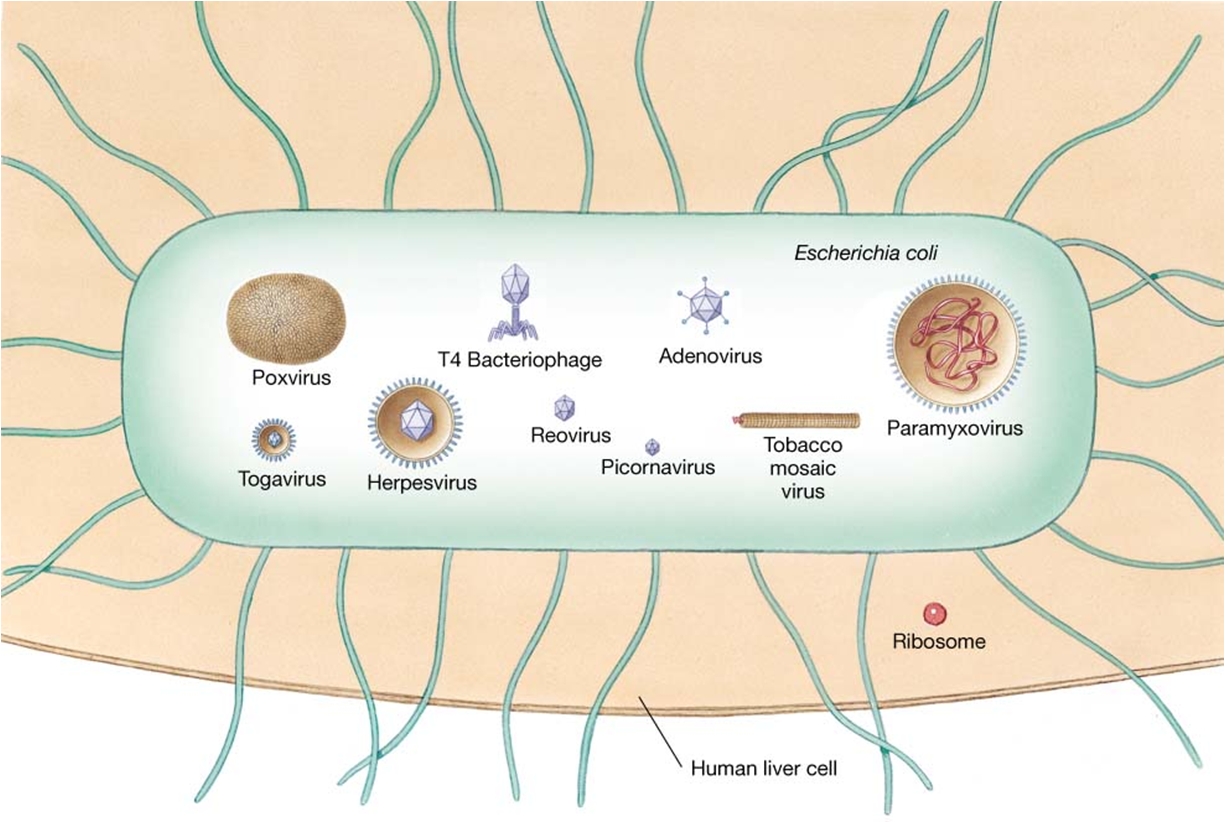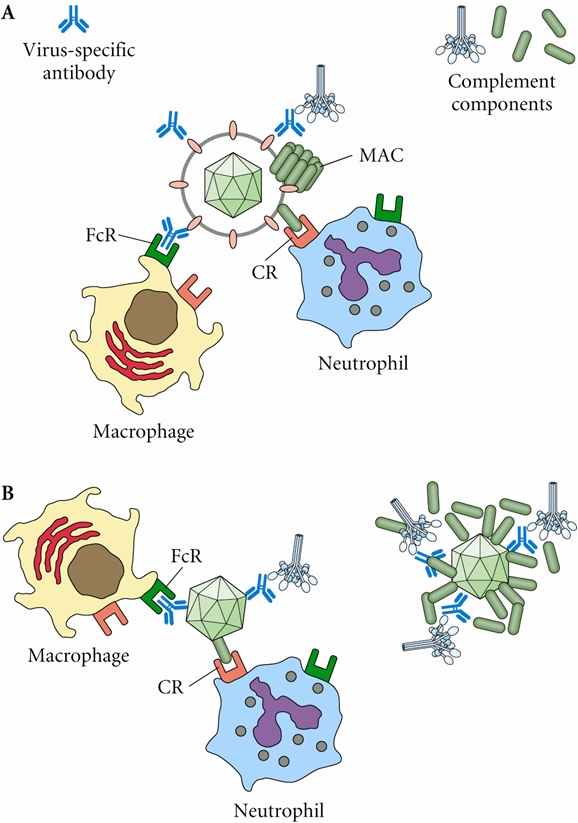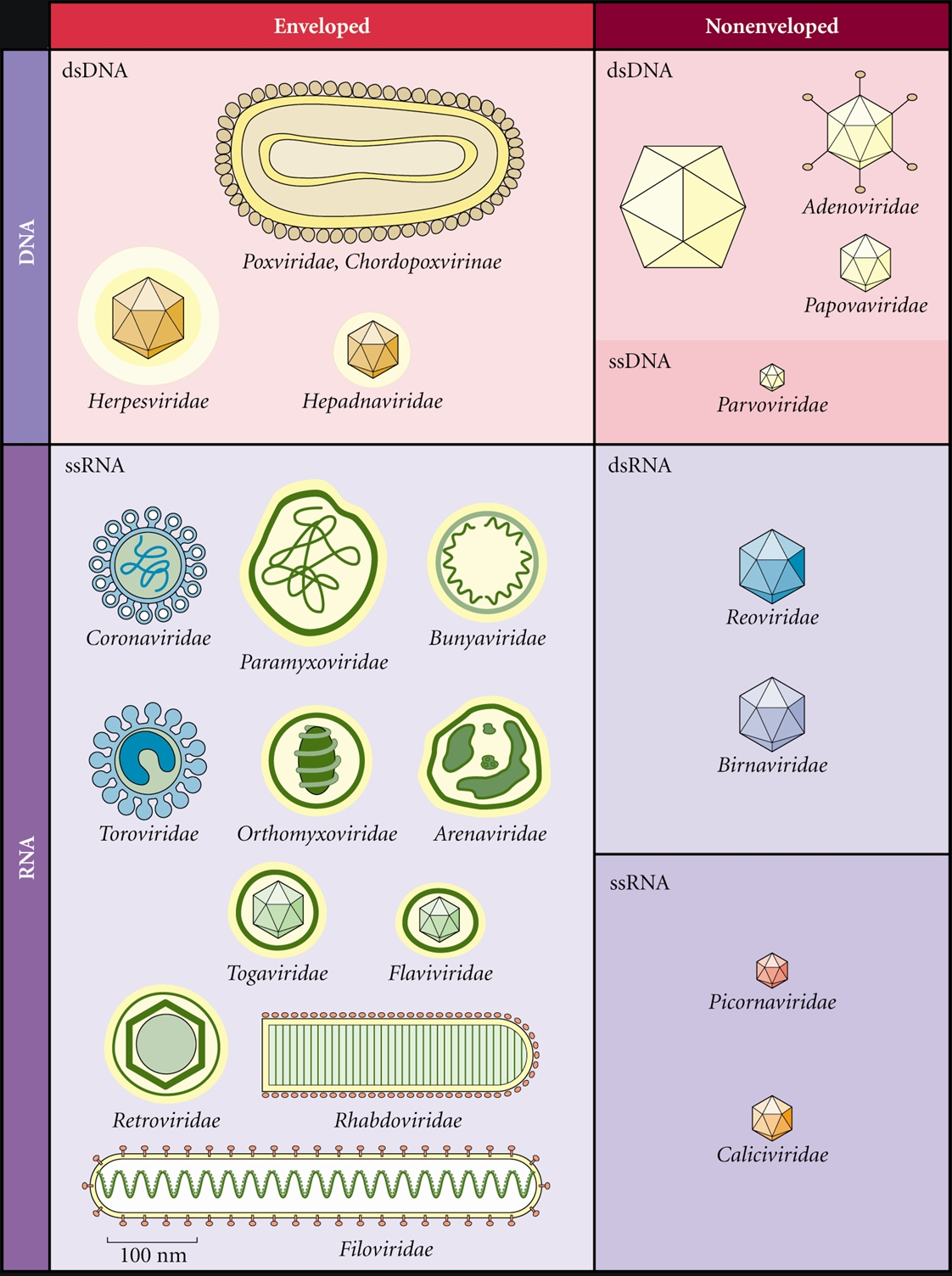|
Viruses
A virus is a small infectious agent that can only replicate inside cells of another organisms. Unlike other pathogens, viruses require a host cell to replicate and spread to other adjacent cells as they do not possess the ability to reproduce on their own. Because they are completely dependent on the cellular metabolism of the host for reproduction, viruses are often referred to as obligate intracellular parasites. These non-cellular human pests typically contain one of two types of genomes, made up of either short strands of DNA or RNA. Shortly after a virus enters a cell, it is usually the synthetic machinery of the host cell that allows the virus to create specialized elements called capsid that allow their genome to transferred to other cells efficiently.
Figure 1. Virus mode of infection. (A) Viral-envelope antigens bind to receptors on the host cell and is taken up. (B) Viral proteins are expressed and presented by MHC class I molecules by the infected cell. At this point, the infected cell is a target for cytotoxic T lymphocytes (CTL). (C) Viral effects on host cell surface proteins; target for CTL or natural killer cells. (D) Viral proteins inserted into host cell membrane; antibodies bind, causing cell death by antibody-dependent cell-mediated cytotoxicity (ADCC) or by complement fixation (not shown). Generally, viruses are too small to be seen directly using a light microscope. The average virus is about one one-hundredth (1/100) the size of the average bacterium, and most viruses that have been studied have a diameter between 10 nm (nanometres) and 300 nm (Figure 2). Figure 2. A schematic depicting how different viruses compare in size to other microorganisms, such as a single bacterium (blue) and human hepatocyte (tan). Although viruses may induce profound effects on human beings, they also infect all types of organisms, including plants and bacteria. Bacterial viruses, however, are referred to as bacteriophages. In order to survive viral infections, animal and human hosts must be able to monitor their tissues closely for viral infections and be able to respond rapidly using both innate and acquired systems. Optimal responses to viruses involve: (1) Cell-mediated responses, including cytotoxic T lymphocytes (CTL) and natural killer cells which destroy infected targets that have presented viral antigens via MHC class I molecules, and (2) antibodies, which neutralize the virus by blocking attachment to host cell receptors and facilitate antibody-dependent cell-mediated cytotoxicity (Figure 3). Figure 3. Examples of antibody-mediated mechanisms against viral infections. Opsonization is effective against both enveloped (A) & non-enveloped viruses (B). Enveloped viruses are also susceptible to direct complement-lysis by membrane attack complex (MAC). Since their initial discovery in 1898, about 5,000 viruses have been described in detail, although there are millions of different types (Figure 4). The study of viruses is known as virology, a sub-specialty of microbiology. Figure 4. Virus classifications. Click to enlarge.
The following list of viruses have been profiled:
|
click the animation to read more about the featured organism
|




